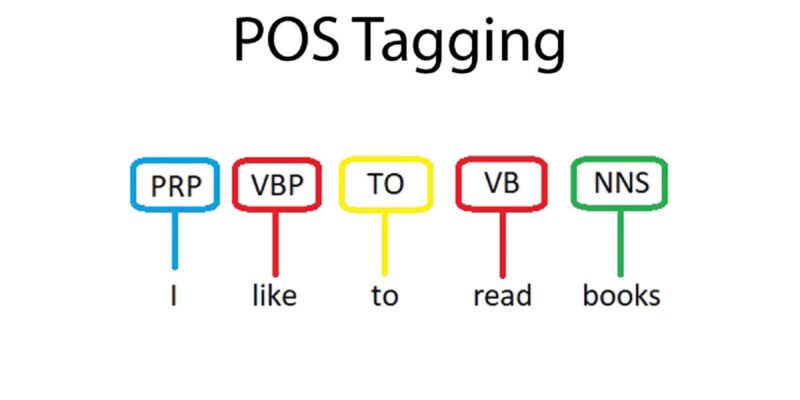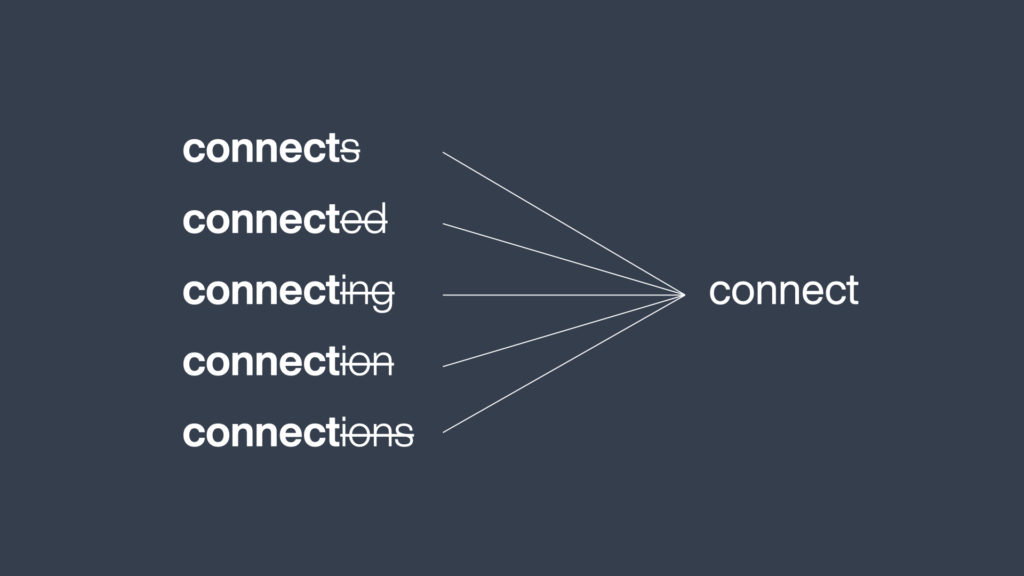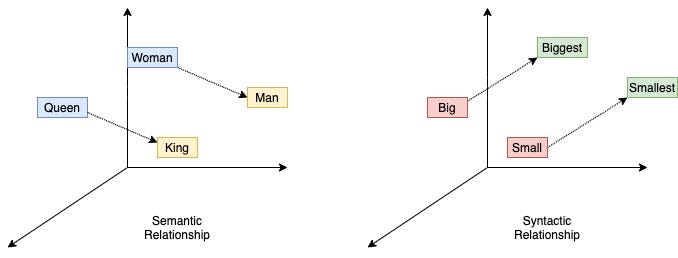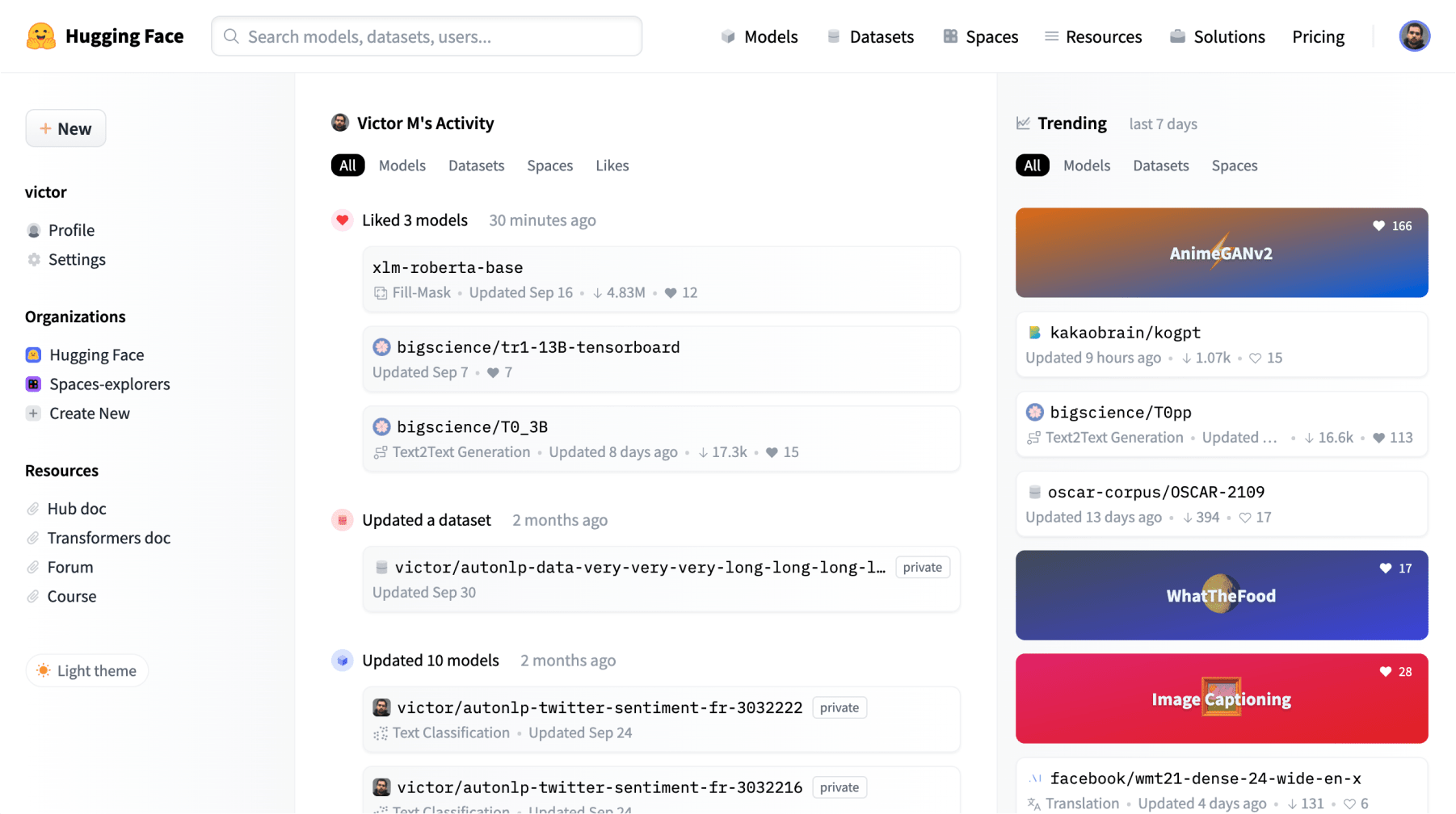
An introduction to natural language processing in Python#
Jeremy R. Manning#
Computational Foundations for Neuroscience Dartmouth College 🌲 November 2, 2023

What’s covered in this tutorial?#
Today’s NLP tutorial provides some background and shows how to apply several different text embedding models to a conversations dataset.
The tutorial also shows how to implement a simple chatbot using
langchain.Suggestion: open the tutorial in Google Colaboratory and select “Run All” from the “Runtime” menu, while I’m going through the slides. Then you can play around with the different pieces once everything has loaded.

What is natural language processing?#
Branch of computational linguistics
Use computational approaches to process, analyze, and understand language
Early tasks: part of speech tagging#

Early tasks: stemming/lemmatization#

Early tasks: automatic summarization#
But how can we get at the meaning of natural language?#
Text embedding models#
Preprocess some text to make a “training corpus”
Train a model to parse the documents in the corpus
Goal: generate “feature vectors” (for words, phrases, documents, etc.) that capture semantic properties of the text
Latent semantic analysis#

Latent Dirichlet Allocation (LDA)#
Word2vec#

Consider the following phrases:#
“My dog ate my homework”
vs.
“My homework ate my dog”
Bag of words vs. context-sensitive models#
BoW models (e.g., LSA, LDA, word2vec) don’t care about word order
C-S models “care” about context and grammar by picking up on word order effects
Universal Sentence Encoder#

Transformers#

Transfomers#
Tokenize text into smaller units (words/sub-words)
Embed tokens (ignoring order)
Update the embeddings to include position information (add features)
Update the embeddings using the encoder and decoder layers: a. The encoder processes the inputs b. The decoder generates outputs
Transformers#
Initially used for “sequence-to-sequence” tasks (e.g., translation)
Now the basis of most state-of-the-art NLP models
Generative Pretrained Transformer (GPT)#
Variant of transformers
“Regular” transformers have both an encoder and decoder; GPT only has the decoder part
The goal is to predict the next token in a sequence, given the previous context
The model is “pre-trained” on a large corpus of text to learn which tokens are likely to follow which other tokens
The model can then be “fine-tuned” on specific tasks (e.g., Q&A, following instructions, coding tasks, etc.)
Goal: text completion, translation, summarization, writing code, etc.
NLP in practice#
Natural Language Toolkit (NLTK) implements lots of basic text processing tasks like tokenization, lemmatization, part of speech tagging, etc.
Scikit-learn has some basic models, like LDA
For fancier models the best place to look is Hugging Face
NLTK#
Implements lots of fundemantal “traditional” computational linguistics tasks
import nltk
sentence = """At eight o'clock on Thursday morning
... Arthur didn't feel very good."""
tokens = nltk.word_tokenize(sentence)
tagged = nltk.pos_tag(tokens)
Hugging Face#

transformers library (by Hugging Face)#
Direct interactions with text and models
from transformers import AutoTokenizer, AutoModelForMaskedLM
tokenizer = AutoTokenizer.from_pretrained("bert-base-uncased")
model = AutoModelForMaskedLM.from_pretrained("bert-base-uncased")
pydata-wrangler library#
Wrapper for
scikit-learnand Hugging Face models, focused on computing text embeddings
import datawrangler as dw
bert = {'model': 'TransformerDocumentEmbeddings',
'args': ['bert-base-uncased'],
'kwargs': {}}
bert_embeddings = dw.wrangle(my_text,
text_kwargs={'model': bert})
Lots of other useful tools for working with data (supports numpy, pandas, text, images, and more)
Essentially the core function (
dw.wrangle) turns messy data into Pandas DataFrames
Interactive agents (ChatBots)#
Early implementations (e.g., ELIZA) used clever string manipulation hacks

Modern chatbots: predictive text models (text embeddings, positional coding, etc.)
langchain library#
Provides some great tools for interfacing with a wide variety of language models from Hugging Face, OpenAI, Meta, and more
Infrastructure for chaining together prompts, tasks, models, etc.
Summary#
Text embeddings: bag of words vs. context-sensitive models
Chatbots: string manipulations vs. predictive text models
Suggested libraries:
scikit-learn,pydata-wrangler,transformers, andlangchain


